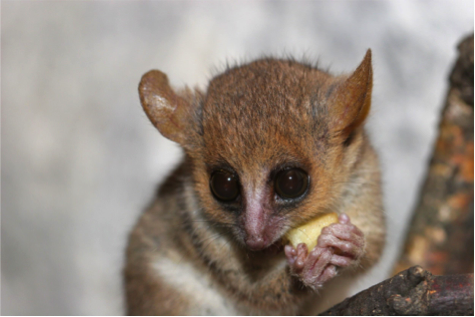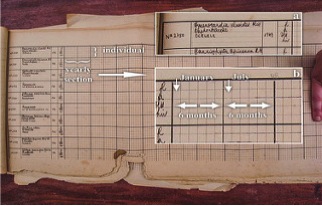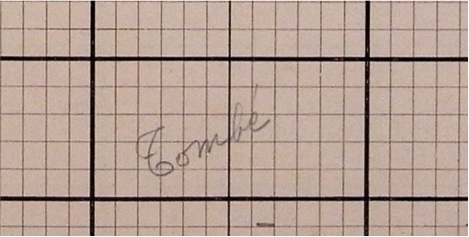by Justin Brown
The Zooniverse website is home to the Etch a Cell project. Zooniverse is a scientific platform where everyday citizens can help scientist do research without needing any scientific background at all. Etch a Cell is about the study of the nucleus, or center, of the cell in order to understand how it works. This is in an effort to study the changes in the structure of the nuclear envelope, the wall surrounding the nucleus, between healthy cells and diseased cell. Scientist need three dimensional models of the nuclear envelope in order to study them, and the Etch a Cell project allows for citizens to help create those models.
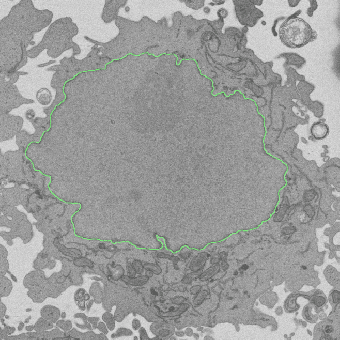
In this image the cell’s nucleus is “segmented”, with the annotation overlay toggling on and off for clarity (Etch a Cell)
Scientists can create the models using a process known as segmenting. An electron microscope is used to take pictures of multiple layers of the cell. These images are sent to the Zooniverse website where they can be viewed. The observer of these images can then draw a line where they think the nuclear envelope should be. After multiple citizens have viewed and recorded their analysis, the data is reviewed once more and the nuclear envelope is determined through consensus. This process repeats itself for the different layers of the cell until scientist can establish a full three dimensional view of the cell.
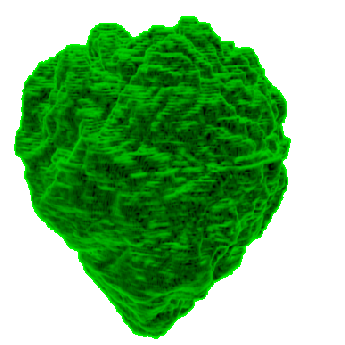
3D reconstruction of 2D segmented images of a nucleus (Etch a Cell)
Having a three dimensional look of the cell’s structure allows scientists to have an in depth analysis to study how the shape has changed and why. This research would take ages if the scientists were doing it alone. But thanks to those who participate in this scientific investigation and contribute some of their time and energy to help this study, scientists can work faster and develop computing software for this task.
The reason why this research is important is that it could help many people in the future. People with diseases, viruses, and cancer can truly benefit from this study. The end goal of the Etch a Cell project is to find treatments for people and to learn more about what happens to people with these illnesses on the cellular level. When a virus attacks a cell the nuclear envelope is broken down, exposing the nucleus and damaging the cell. This became known through research, but is only a small part of the importance of the nuclear envelope. The rest is yet to be determined, but the Etch a Cell project does greatly improve the quality and speed of the much needed cellular research.
Zooniverse. 2017, July 14. Etch a Cell. Retrieved from https://www.zooniverse.org/projects/h-spiers/etch-a-cell/about/research
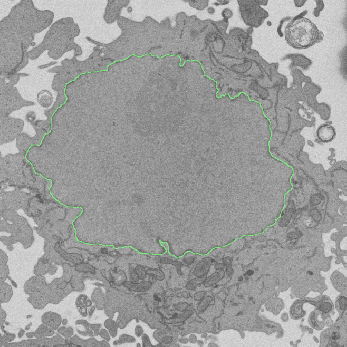
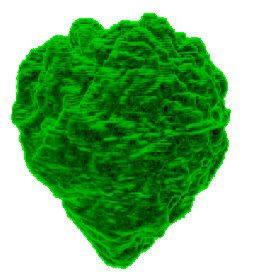 With what might seem like only a small amount of assistance, people like you and I can help change the dynamics of cell studies. Segmenting the photos by themselves makes the overall process of creating the three-dimensional models much easier for the scientists. From the creations of the three-dimensional models scientists will now be able to understand how different diseases affect the cell, specifically the nucleus and nuclear envelope. Eventually computers will learn to do both the segmentation and creation of models on their own but all it will take is the continuous help of citizen scientists. With enough help from citizen scientists we can help the scientists at the Francis Crick Institute be “able to train computers to segment automatically” which can further their understanding of biology and the ability “to work out how new treatments might be created” (The Francis Crick Institute).
With what might seem like only a small amount of assistance, people like you and I can help change the dynamics of cell studies. Segmenting the photos by themselves makes the overall process of creating the three-dimensional models much easier for the scientists. From the creations of the three-dimensional models scientists will now be able to understand how different diseases affect the cell, specifically the nucleus and nuclear envelope. Eventually computers will learn to do both the segmentation and creation of models on their own but all it will take is the continuous help of citizen scientists. With enough help from citizen scientists we can help the scientists at the Francis Crick Institute be “able to train computers to segment automatically” which can further their understanding of biology and the ability “to work out how new treatments might be created” (The Francis Crick Institute). 